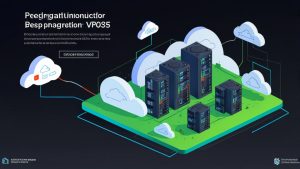Centralized Server Security Management
One of the key aspects of effective server operation is security. In today’s world, where cyber threats are becoming increasingly complex and diverse, server protection is a priority for any business or organization. Centralized server security management is a convenient and effective way to ensure the protection of data and information on the server.
Benefits of Centralized Security Management
1. Centralized security management allows you to combine all server protection tools in one place. This means that the administrator does not need to switch between different tools and control panels – all security operations can be performed from one convenient interface.
2. Provides centralized control over all devices and users that have access to the server. This allows you to quickly track and respond to any potential security threats, as well as effectively manage access policies and user rights.
3. The centralized security management system provides the ability to monitor and analyze all events on the server in real time. This allows you to quickly identify and prevent any anomalous activity or unauthorized access attempts.
Key Components of Server Protection
1. Antivirus protection – protection against viruses, trojans, spyware, and other malicious threats.
2. Firewall – a network traffic control mechanism that allows you to filter and block unauthorized connections to the server.
3. Security monitoring system – a set of tools for monitoring and analyzing the actions of users and devices on the server.
4. Updates and vulnerabilities system – regular updates to all server programs and components, as well as finding and eliminating vulnerabilities in the system.
Steps to Install Centralized Security Management
1. Choosing the right server security management platform.
2. Setting up the server security monitoring and analysis system.
3. Installing and configuring antivirus protection and a firewall on the server.
4. Creating security policies and access rights for users and devices.
5. Regularly updating and monitoring the security status of the server.
Conclusion
Centralized server security management is a prerequisite for ensuring the protection of data and information on the server from modern cyber threats. A properly configured protection system allows you to quickly respond to any security threats and ensures stable server operation. Therefore, investing time and resources in centralized security management is a key step in creating a reliable and secure server infrastructure.





